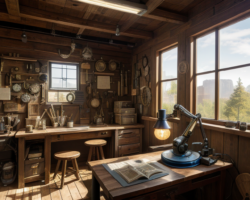Discover the art of sewing with our comprehensive guide – from choosing the right machine to advanced stitching and fabric tips. Perfect for beginners and experts alike.
Choosing the Right Sewing Machine
Choosing the Right Sewing Machine
When it comes to choosing the right sewing machine for your needs, there are several factors to consider. The first thing to think about is what type of sewing you plan to do. For those new to sewing or who plan to do basic projects, a mechanical sewing machine may be the best option. These machines are straightforward and easy to use, making them perfect for beginners. However, if you have more advanced sewing needs or plan to work with heavy fabrics or multiple layers, a computerized sewing machine with a variety of stitch options may be a better choice.
Another important consideration when choosing a sewing machine is your budget. Sewing machines come in a wide range of prices, so it’s important to determine how much you’re willing to spend before making a purchase. Keep in mind that a higher price doesn’t always mean better quality, so be sure to read reviews and do your research before committing to a sewing machine.
Finally, don’t forget to consider the features that are most important to you. For example, if you plan to do a lot of quilting, look for a sewing machine with a wide table and a quilting foot. If you’ll be sewing clothing, a machine with an automatic buttonhole feature may be a necessity. Think about the types of projects you plan to work on and choose a machine that has the features you’ll use most frequently.
Basic Sewing Techniques for Beginners
When starting out with sewing, it can be overwhelming to see all the different stitches and techniques that are available. However, as a beginner, it’s important to start with the basics and gradually work your way up. One of the first things any beginner in sewing should learn is how to properly thread a needle. This may seem simple, but knowing how to do it correctly can save you a lot of frustration in the long run.
Another important basic technique to learn is sewing a straight line. This is the foundation for many sewing projects, and mastering this skill will set you up for success in your future sewing endeavors. To practice sewing in a straight line, you can use a piece of scrap fabric or even just a piece of paper with lines drawn on it. Take your time and focus on keeping the stitches even and straight.
Finally, understanding how to properly use a seam ripper is a crucial skill for any beginner. Mistakes happen, and being able to remove stitches without damaging the fabric is an essential part of the sewing process. By mastering these basic sewing techniques, beginners can lay a solid foundation for their journey to becoming expert seamstresses.
Understanding Patterns and Fabric Selection
When it comes to sewing, one of the most important aspects to consider is patterns and fabric selection. Choosing the right pattern can make or break a sewing project, and understanding different fabric types is crucial for achieving professional-looking results. Whether you’re a beginner or an experienced seamstress, mastering the art of pattern selection and fabric choice is essential for creating beautiful and durable garments.
When selecting a pattern for your sewing project, it’s important to consider the level of difficulty and the style you’re aiming for. As a beginner, it’s best to start with simple patterns that involve straight lines and minimal details. This will help you build confidence and develop your sewing skills. As you gain more experience, you can challenge yourself with more intricate patterns that require advanced techniques.
Another important aspect of sewing is fabric selection. Different fabrics drape and behave in different ways, so understanding their properties is crucial for achieving the desired look and feel of your garment. Factors to consider when choosing fabric include weight, stretch, drape, and print. For example, a lightweight and flowy fabric like chiffon is perfect for creating an elegant evening gown, while a sturdy and structured fabric like denim is ideal for making durable jeans.
Learning Advanced Sewing Stitches
Once you have mastered the basic sewing techniques, it’s time to take your skills to the next level by learning advanced stitches. Advanced sewing stitches can add beautiful and intricate details to your creations, making them look polished and professional.
One of the most important advanced stitches to learn is the French seam, which creates a neat finished edge on the inside of your garment. Another essential stitch is the blind hem stitch, perfect for creating invisible hems on skirts, pants, and dresses. Additionally, the overlock stitch is great for finishing raw edges, preventing fraying and adding a clean look to your projects.
By mastering these advanced stitches, you can elevate the quality and professional appearance of your sewing projects, taking your skills from beginner to expert seamstress in no time. So, don’t be afraid to challenge yourself and experiment with new techniques to enhance your sewing repertoire.
Creating Professional-Quality Finishing
When it comes to sewing, one of the most important aspects of creating a polished and professional-looking garment is the finishing. The finishing touches can truly make or break a project, so it’s crucial to pay attention to this stage of the sewing process.
One of the key techniques for achieving professional-quality finishing is to invest in high-quality sewing supplies. This includes using top-notch thread, sharp needles, and quality fabric scissors. It’s also important to use the right type of interfacing and lining to ensure that the garment looks and feels well-constructed.
Another important aspect of creating professional-quality finishing is to pay attention to the details. This includes carefully pressing and steaming seams, adding any necessary topstitching or edgestitching, and neatly finishing off any raw edges. Taking the time to meticulously finish off every detail will result in a garment that looks like it was made by a skilled professional.
Tips for Sewing Different Types of Fabrics
When it comes to sewing, choosing the right fabric is crucial for a successful project. Different types of fabrics require different sewing techniques in order to achieve the best results. One important tip for sewing different types of fabrics is to use the appropriate needle and thread. For example, when sewing lightweight fabrics such as silk or chiffon, a fine needle and lightweight thread are essential to prevent puckering and pulling. On the other hand, heavy fabrics like denim or canvas require a heavy-duty needle and thicker thread to ensure durability and strength.
Another tip for sewing different types of fabrics is to adjust the tension and stitch length on your sewing machine. Lightweight fabrics may require a lower tension and shorter stitch length to prevent snagging, while heavy fabrics may need a higher tension and longer stitch length to accommodate the thickness. It’s important to test your settings on a scrap piece of fabric before starting your project to ensure the best results.
Lastly, pressing and finishing your seams is essential when working with different fabrics. Lightweight fabrics should be pressed with a low heat setting to avoid scorching, while heavy fabrics can withstand a higher heat setting for a crisp finish. Additionally, selecting the appropriate seam finish for each fabric type, such as zigzag stitches for knits and French seams for delicate fabrics, will ensure that your finished project looks polished and professional.
Making Alterations and Repairs
When it comes to sewing, being able to make alterations and repairs is an essential skill to have. Whether it’s fixing a torn seam, shortening a hem, or taking in a too-loose garment, knowing how to make these adjustments can save you from having to throw away your beloved clothing items. One of the first things to consider when making alterations is to carefully measure and mark the areas that need to be adjusted. Taking accurate measurements and marking the fabric will ensure that your alterations are precise and well-fitted.
Once you have identified the areas that need to be altered, it’s important to have the right supplies on hand. This may include a seam ripper, a variety of sewing needles, and matching thread. Additionally, having a good understanding of different sewing techniques such as stitching, hemming, and darning will be beneficial when making alterations and repairs. Whether you’re dealing with a delicate fabric or a sturdy denim, choosing the right sewing machine and needle for the job is crucial in achieving professional-quality results.
Furthermore, being knowledgeable about different types of fabrics and their properties can also impact the way you approach alterations and repairs. Understanding how certain fabrics stretch, drape, or fray can help you determine the best way to make adjustments without compromising the integrity of the garment. With the right skills, tools, and knowledge, you can confidently tackle any alteration or repair project, turning your sewing workshop into a place of transformation and restoration for your clothing.
Mastering Sewing Projects for Home Decor
Mastering Sewing Projects for Home Decor
When it comes to sewing projects for home decor, there are countless ways to add a personal touch to your living space. Whether you’re looking to create custom throw pillows, window treatments, or even reupholster furniture, mastering sewing techniques for home decor can take your interior design game to the next level. With the right tools, fabrics, and a bit of creativity, you can transform your living space into a personalized oasis.
One of the key elements of mastering sewing projects for home decor is understanding how to work with different types of fabrics. From heavy-duty upholstery fabrics to delicate sheer fabrics for curtains, each type of fabric requires different sewing techniques to achieve professional results. Understanding the properties of each fabric and how they will work in your specific project is essential for a successful outcome.
Another important aspect of mastering sewing projects for home decor is learning advanced finishing techniques. Professional-quality finishing can make a huge difference in the overall look and durability of your sewing projects. Whether it’s mastering the art of invisible hand stitching for seamless seams or creating perfectly mitered corners on throw pillows, paying attention to the finer details can elevate your home decor projects to an expert level.
Frequently Asked Questions
What should I bring to a sewing workshop?
You should bring a sewing machine (if you have one), fabric, thread, scissors, and any other sewing supplies you have. If you don’t have a machine, don’t worry – we have some available for use during the workshop.
Do I need any prior experience to attend the workshop?
No prior experience is necessary! This workshop is designed for beginners, but we also have more advanced projects for those with some sewing skills.
What will I learn during the workshop?
You’ll learn the basics of operating a sewing machine, reading and cutting patterns, and sewing different types of stitches. By the end of the day, you’ll have completed a simple project and gained the skills to tackle more advanced projects on your own.
Who will be teaching the workshop?
Our workshop will be led by an experienced seamstress who has been teaching sewing for over 10 years. She is passionate about helping others learn the art of sewing and is excited to share her knowledge with you.
Is lunch provided during the workshop?
Yes, a light lunch will be provided for all participants. Please let us know ahead of time if you have any dietary restrictions so we can accommodate you.
What should I wear to the workshop?
Wear comfortable clothes that you don’t mind getting a little dirty – sewing can be messy! Closed-toe shoes are recommended for safety while using the sewing machines.
Will I have a completed project to take home at the end of the workshop?
Yes, by the end of the day, you’ll have a completed project to take home with you. You’ll be amazed at what you can accomplish in just one day of sewing!





